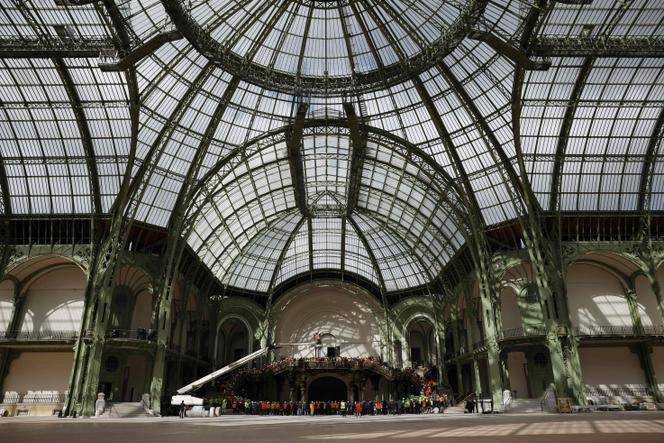
The nave of the Grand Palais is ready for the Olympic Games. After three years of intensive construction work, Paris 2024 has taken over this magnificent space, where the fencing and taekwondo events will be held from the end of July. Work on the adjoining galleries has fallen slightly behind schedule, but by the end of May it will all be finished, according to Daniel Sancho, the project director for Réunion des Musées Nationaux (RMN), the contracting authority for the vast Grand Palais renovation operation. "This will be more than enough time to put in place the necessary fittings in these spaces, which will house the training and warm-up rooms, the anti-doping testing room and the PC security facilities."
Once the major sporting event is over, the project will enter its final phase, leading to the reopening of the Galeries Nationales (national galleries, scheduled for June 2025) and the Palais de la Découverte (in 2026). Architecturally, the challenge of the operation is already fully apparent. First and foremost, it involves revealing the Belle Epoque jewel that was the Grand Palais when it was inaugurated in 1900 for the Universal Exhibition.
Recapturing the splendor of yesteryear
Emblematic of the Beaux-Arts style, much like the Petit Palais opposite and the Pont Alexandre III – both also designed for the 1900 Universal Exhibition – the Grand Palais is an unusual monument. An asymmetrical arrangement of three separate but interconnected buildings (the nave; the Palais d'Antin, which housed the Palais de la Découverte in 1936; and the "intermediate building"), its design required the collaboration of no fewer than four architects (Henri Deglane, Louis-Albert Louvet, Albert Thomas and Charles Giraud). It has survived two wars, a fire, a demolition project and the lowering of the Seine riverbed, which at one point threatened its foundations.
Various renovation campaigns have kept it operational, but in 120 years of existence, its grandeur has waned. Notwithstanding its fabulous glass roof – the largest in Europe to this day – the building has gradually turned into a confusing jumble, its layout increasingly unclear. Restoring its former splendor and reinstating coherence to the space were the two primary goals of the project, which also sought to modernize the building to meet current standards and transform it into an efficient facility suited to contemporary needs and uses.
At the helm is François Chatillon, chief architect of historic monuments, whose agency has been responsible for such prestigious restorations as Le Corbusier's studio-apartment, the Luxor obelisk and Strasbourg's municipal baths. In the summer of 2020, just as the first lockdown was ending, his project replaced that of the LAN agency, the competition's official winner, which had envisaged much more extensive transformations for the Grand Palais.
You have 59.66% of this article left to read. The rest is for subscribers only.